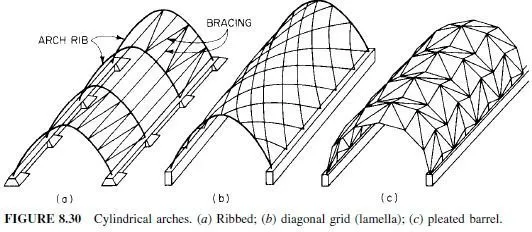Fabrication of steel structures usually requires cutting of components by thermal cutting processes such as oxyfuel, air carbon arc, and plasma arc. Thermal cutting processes liberate a large quantity of heat in the kerf, which heats the newly generated cut surfaces to very high temperatures. As the cutting torch moves away, the surrounding metal cools the cut surfaces rapidly and causes the formation of a heat-affected zone analogous to that of a weld.
The depth of the heat-affected zone depends on the carbon and alloy content of the steel, the thickness of the piece, the preheat temperature, the cutting speed, and the postheat treatment.
In addition to the microstructural changes that occur in the heat-affected zone, the cut surface may exhibit a slightly higher carbon content than material below the surface.
The detrimental properties of the thin layer can be improved significantly by using proper preheat, or postheat, or decreasing cutting speed, or any combination thereof. The hardness of the thermally cut surface is the most important variable influencing the quality of the surface as measured by a bend test. Plate chemistry (carbon content), Charpy V-notch toughness, cutting speed, and plate temperature are also important. Preheating the steel prior to cutting, and decreasing the cutting speed, reduce the temperature gradients induced by the cutting operation, thereby serving to (1) decrease the migration of carbon to the cut surface, (2) decrease the hardness of the cut surface, (3) reduce distortion, (4) reduce or give more favorable distribution to the thermally induced stresses, and (5) prevent the formation of quench or cooling cracks. The need for preheating increases with increased carbon and alloy content of the steel, with increased thickness of the steel, and for cuts having geometries that act as high stress raisers. Most recommendations for minimum preheat temperatures are similar to those for welding.
The roughness of thermally cut surfaces is governed by many factors such as (1) uniformity of the preheat, (2) uniformity of the cutting velocity (speed and direction), and (3) quality of the steel. The larger the nonuniformity of these factors, the larger is the roughness of the cut surface. The roughness of a surface is important because notches and stress raisers can lead to fracture. The acceptable roughness for thermally cut surfaces is governed by the job requirements and by the magnitude and fluctuation of the stresses for the particular component and the geometrical detail within the component. In general, the surface roughness requirements for bridge components are more stringent than for buildings. The desired magnitude and uniformity of surface roughness can be achieved best by using automated thermal cutting equipment where cutting speed and direction are easily controlled. Manual procedures tend to produce a greater surface roughness that may be unacceptable for primary tension components. This is attributed to the difficulty in controlling both the cutting speed and the small transverse perturbations from the cutting direction.
(R. L. Brockenbrough and J. M. Barsom, Metallurgy, Chapter 1.1 in Constructional Steel Design An International Guide, R. Bjorhovde et al, Eds., Elsevier Science Publishers, Ltd., New York.)



